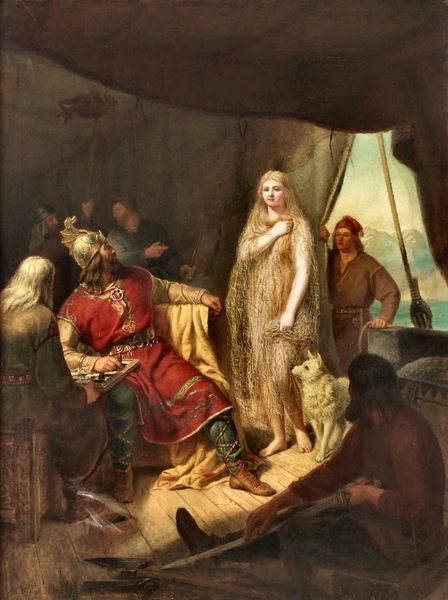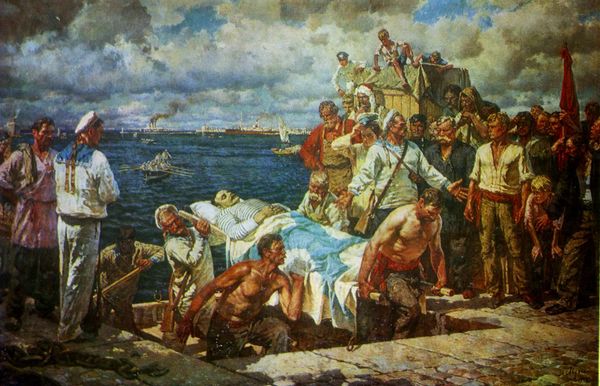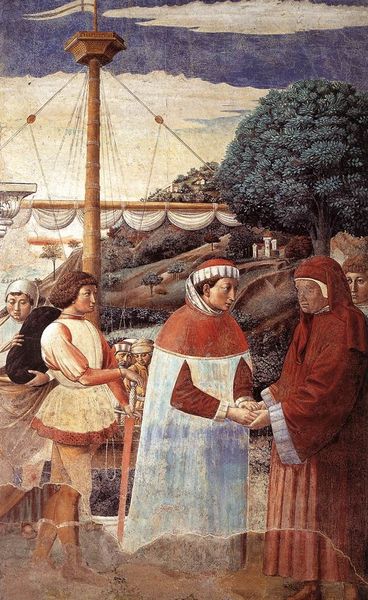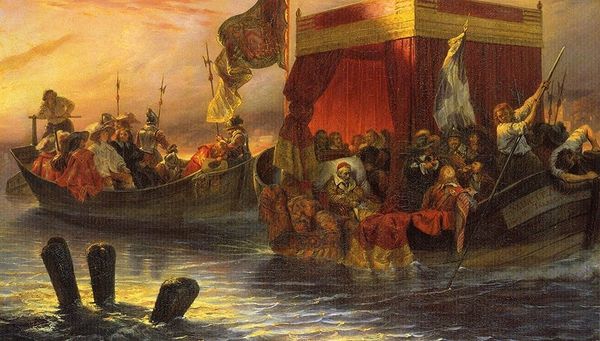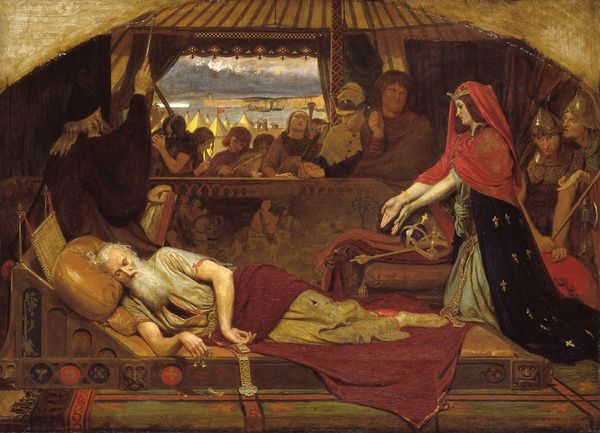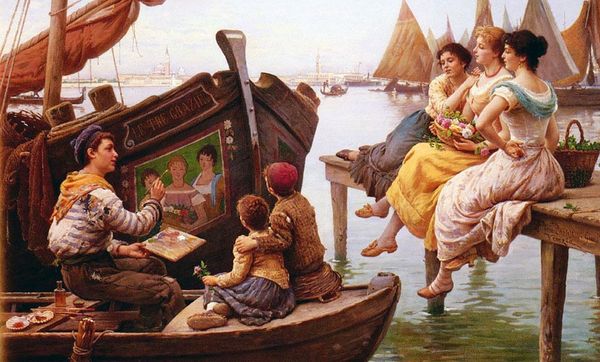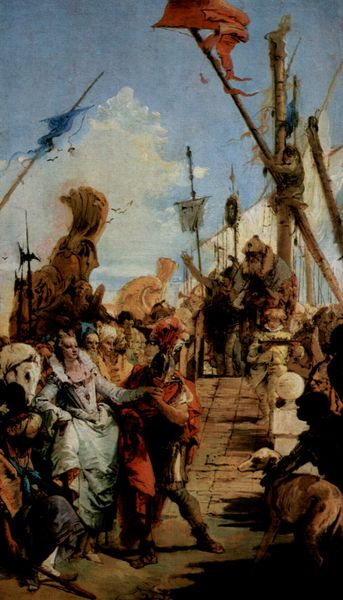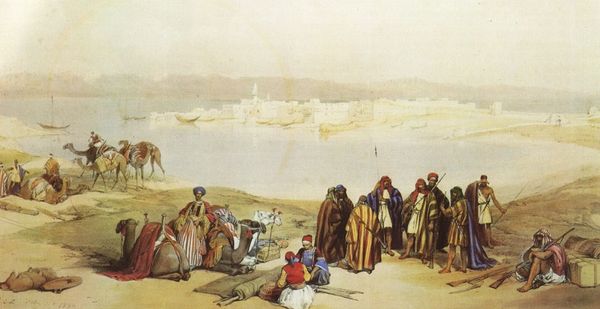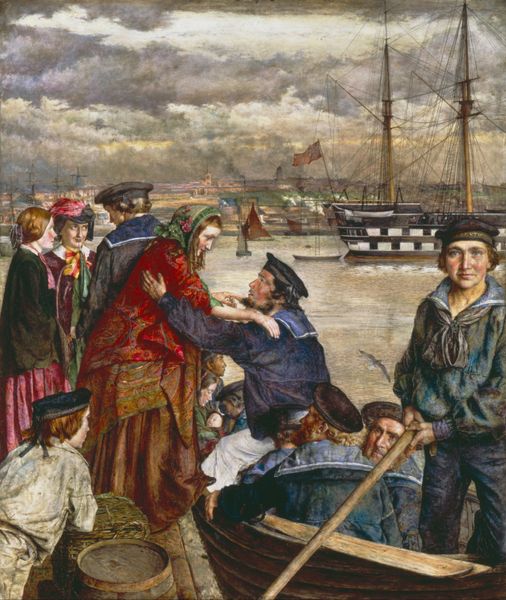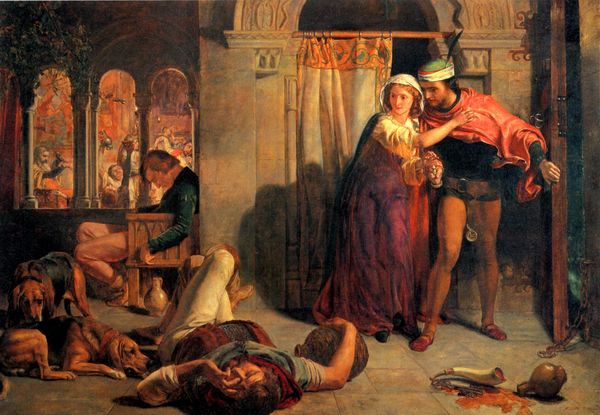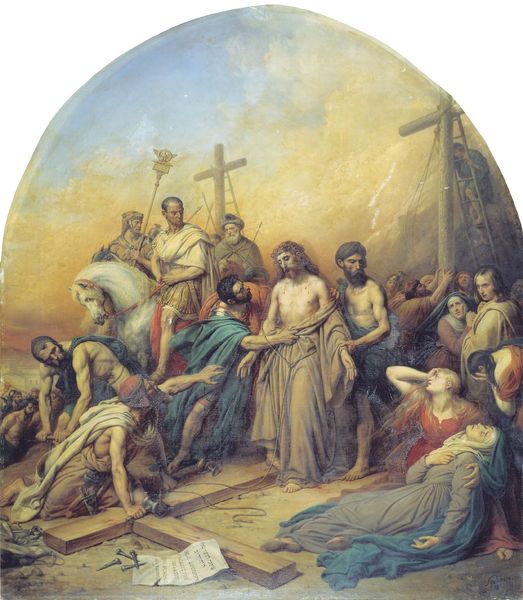
oil-paint
#
portrait
#
oil-paint
#
landscape
#
oil painting
#
group-portraits
#
orientalism
#
genre-painting
#
history-painting
#
academic-art
#
realism
Copyright: Public domain
Editor: This is Pierre Puvis de Chavannes' "Marseilles, Gate to the Orient (detail)" from 1869, created using oil paint. I'm struck by the combination of figures that seem posed, against the bustling port in the background. It feels like it's trying to capture a very specific moment, a controlled observation. What do you see in this piece? Curator: This painting exemplifies the intersection of Orientalism and French Academic art, reflecting a historical power dynamic. It’s not just a picturesque scene. De Chavannes positions Marseille, and by extension, France, as a gateway, a controller of passage and cultural exchange with the "Orient." Consider who is centered: are they in control of their movement or part of a curated experience? Editor: That makes me see it very differently. The figures, especially those closest to us, do seem like they're on display, observed rather than active. What about the way the different ethnicities are presented – is there a hierarchy at play? Curator: Absolutely. The positioning, clothing, and even the implied activities denote status and reflect prevailing colonial attitudes. Who has agency in this image? Who is simply present? Even the setting, a port, emphasizes the role of trade and, by extension, the economic exploitation inherent in colonialism. It prompts questions about representation, cultural appropriation, and the gaze. Whose gaze is privileged here? Editor: It's unsettling now that I'm considering it from that point of view. The "exoticism" feels much less innocent. Is there a critique implied, or is it a reinforcement of those power structures? Curator: It's complicated. De Chavannes was of his time. Whether consciously or not, he participated in the construction of these stereotypes. The painting serves as a valuable historical document, revealing the pervasive ideology of the era. By analyzing its composition and context, we can unpack these complex themes of identity, power, and representation. Editor: I appreciate how you connected the visual elements to the historical context. I will definitely look at similar paintings through a new lens. Curator: And that is the crucial goal: To never stop questioning what you are observing!
Comments
No comments
Be the first to comment and join the conversation on the ultimate creative platform.
